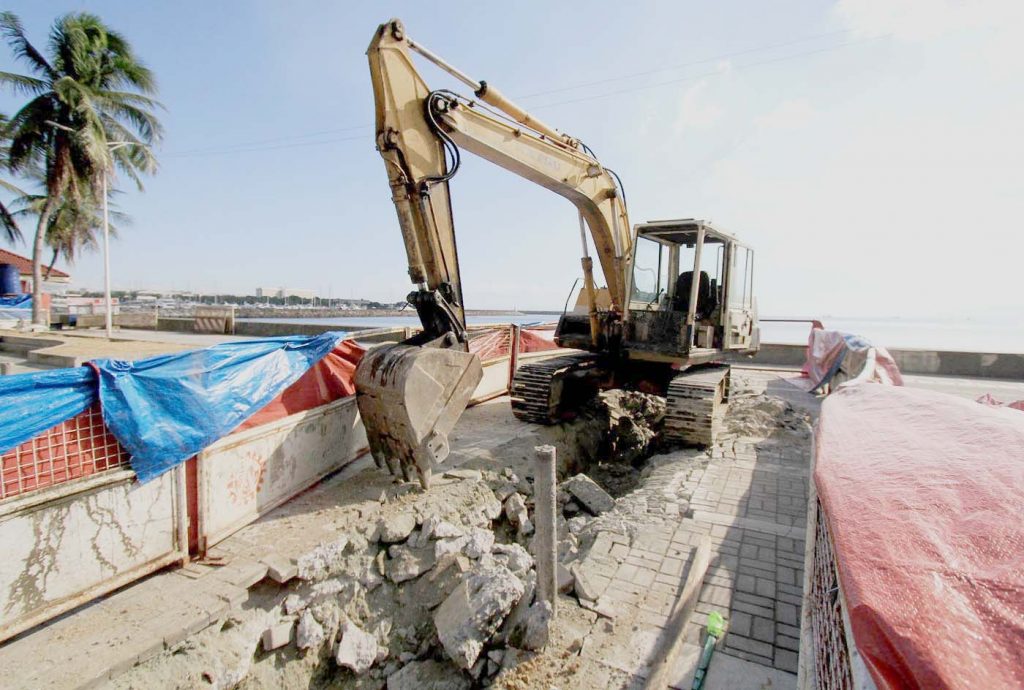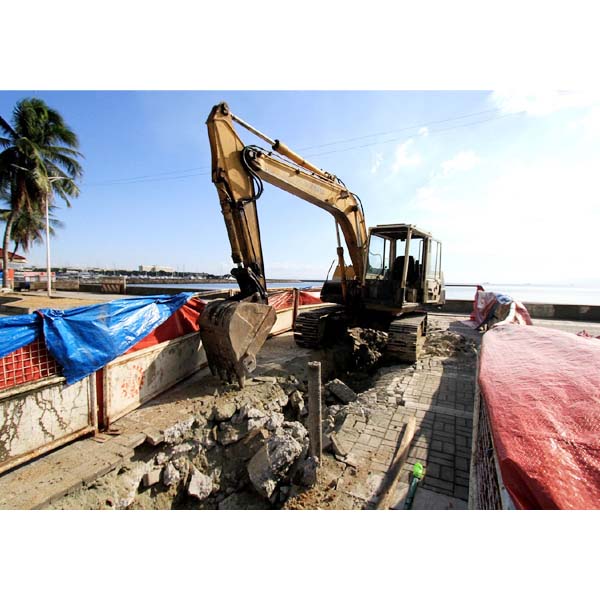
They acted like criminals who could not work in broad daylight.
The Department of Public Works and Highways, with orders – we learned much later – from senior government officials, illegally removed a seven-foot bronze sculpture under the cover of night on April 27.
The comfort woman statue, a symbol of arrogance, brutality and shame under the Japanese occupation during World War II, is now missing from the Manila Bay promenade on Roxas Boulevard, just five months after it was unveiled. An illegal removal, because the statue has the imprimatur of the National Heritage Commission of the Philippines and is a cultural heritage property protected by Republic Act 10066, or The National on the Cultural Heritage Act of 2009.
The statue is dedicated to women forced into sexual slavery by occupying Japanese forces. Its removal has brought shame to our country. No other country has succumbed to Japanese pressure to remove comfort women statues erected in their countries. No threats of unfriendly relations, economic sanctions, pullout of ambassadors, abrogation of sister city agreements have budged Seoul, San Francisco, New Jersey, Sydney, and countries such as China, Canada and Germany into relocating or removing their statues.
Their leaders have backbone to stand firm.
Our statue shows a grieving woman blindfolded. Her back is against the setting sun as she faces east, looking forward to another day when comfort women no longer need to hide in oblivion but will finally be recognized by our government.
Statue’s removal
The statue is back in the hands of artist, Jonas Roces, who grieves not for his work of art but for the comfort women who cannot find a place to stand in her own country, the same country that allows memorials to the soldiers who raped, abused and killed them.
Filipinos, fellow Tsinoys, Koreans and Japanese have expressed their support for the comfort women and disgust at the removal of the statue.
“It is a betrayal of our historical past, a betrayal of public trust, a betrayal of our Lolas who suffered the tragedy during the Japanese occupation,” the coalition “Flowers for our Lolas” said in an April 29 statement.
The coalition is made up of officers and members of women’s organizations, Gabriela and Lila Filipina, Kaisa Para Sa Kaunlaran, Wha Chi Guerrillas, businessmen and academics from the University of the Philippines, De La Salle University, St. Scholastica, among others. (See the complete list on page 10.)
“We are happy, however, that the removal of the statue gives us a venue to raise awareness of our people as to who they are and what their role in history was,” said Sr. Mary John Mananzan of St. Scholastica.
Former guerrillas fighters who survived World War II say removing the statue is “horrible.”
Government behind
Both the national and city governments initially passed the buck to each other, refusing to admit who had the statue removed. However, subsequent news reports from Japan reveal that President Rodrigo R. Duterte himself ordered it upon the request of Japanese officials.
The Japanese newspaper The Daily Manila Shimbun quoted a Japanese official saying Duterte vowed to take “firm measure” on the comfort woman statue as far back as January. We also learned from Manila City Hall sources that before Duterte left last month for the Boao Conference in Hainan City, China, his staff told Manila Mayor Joseph E. Estrada that he wants the statue removed.
Katsuyuki Kawai, a lawmaker of Japan’s ruling Liberal Democratic Party and former special adviser to Prime Minister Shinzo Abe, told reporters on Jan. 17 he conveyed Japan’s regrets over the construction of the monument along Roxas Boulevard during his courtesy call on Duterte in Malacañang.
Duterte has said the statue can be moved to a private place. He said the Japanese felt insulted by the presence of the statue and he didn’t want this issue to affect friendly relations with Japan.
Apparently, the President was bereft of good advice. No one told him that no statue can affect bilateral relations, business and economic engagements.
China and Korea continue to be Japan’s major partners despite continuing efforts to demand justice for comfort women in their countries and refusal to remove the dozens of comfort women memorials. The recall of the Japanese ambassador to South Korea to protest the installation of a comfort women statue in front of its consulate was short-lived. By not backing down, Koreans got more respect, even more benefits from Japan. As well, China and Japan continue to have robust relations despite their differences and China’s vehement language in denouncing Japan’s atrocities and fascism.
Likewise, apparently, no one advised the President that the Japanese understand well the virtue of upholding dignity even unto death!
We can do no less. We have to show Japan that we have pride, too, and will not be subservient to promises of economic gains at the expense of forgetting history and denying justice to victims. Japan will respect us more for standing our ground.
A crying shame
Duterte echoed Foreign Secretary Alan Peter Cayetano’s statement that reparations to the women were made when Japan paid the Philippines a huge sum in 1955. How could Japan make reparations for something it has refused to admit or officially recognize?
The comfort women issue in the Philippines surfaced only in 1992 when the first comfort woman, Lola Rosa Henson, went public. Few of the comfort women are still alive. Most of them took their sad memories to their graves. We should not bury their history but honor them before it is too late. Removing the statue is tantamount to shaming them all over again.
The coalition Uphold Filipino Dignity demands the installation of the statue in a protected public space in solidarity with the global movement of Comfort Women memorials and to uphold the dignity of our nation.
More than the statue, we appeal to Duterte, the Senate and the House of Representatives, Estrada, Cayetano, Public Works Secretary Mark Villar and NHCP chairman Rene Escalante to give formal recognition to the comfort women as part of our national history.
History is the backbone of every society.
Foreign media has described our removal of a memorial as a historical tragedy and clear proof that our leaders can be easily bullied. Have we become objects of pity abroad? Or the laughingstock? Or both?
